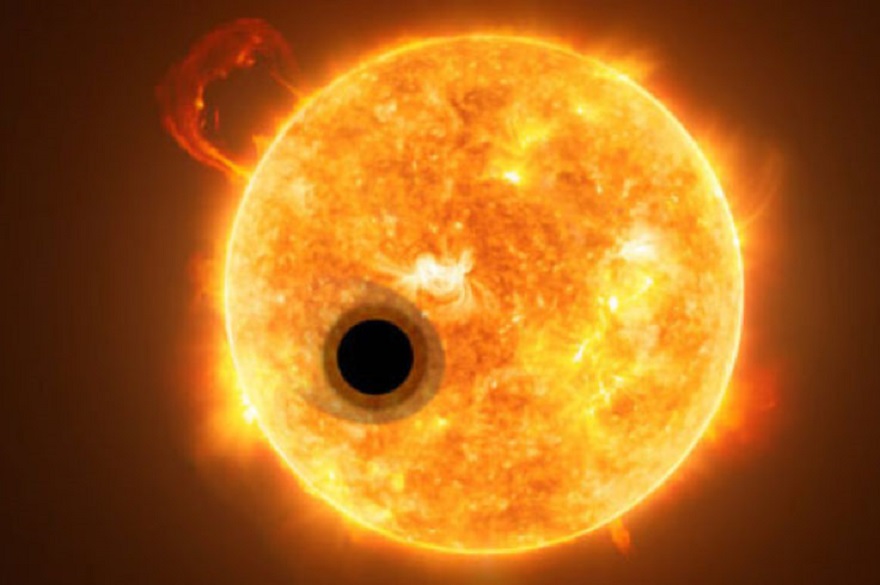Scientists have studied the radiation spectrum of the exoplanet TOI-2134 b. It is located at a distance of 73.8 light-years from us and is a mini-Neptune. The study shows that helium is flowing out of its atmosphere.

Planet TOI-2134 b
Scientists have discovered a helium leak from the atmosphere of an exoplanet that is located near us. The article containing the results of the study was published on August 3 on the website of the arXiv preprints. This gas is one of the main components of stars and giant planets. As recent studies have shown, its leakage also occurs from the depths of the Earth, although until now it is believed that rocky planets are poor for it.
In the case of TOI-2134 b, which is the name of the open planet, scientists have found that they are dealing with a mini-Neptune. There are no planets of this type in the Solar System, so for scientists they represent a certain mystery. Their name seems to indicate that they are reduced copies of gas giants, but in fact they may be closer to super-Earths, which are completely covered with water and have thick layers of atmosphere.
TOI-2134 b is located at a distance of 73.8 light-years from us and, despite this, the infrared spectrometer of the Keck Observatory in Hawaii allows us to estimate the parameters of what is happening with helium in the atmosphere of the planet.
Where does helium come from?
Studies have shown that the helium signal from TOI-2134 b is the weakest ever observed from exoplanets. The peaks in the spectrum correspond to velocities of 7 and 10 km/s, which are significantly lower than that of hot gas giants, in which this phenomenon has been observed so far.
When a “hot Jupiter” loses helium from its atmosphere, it is usually associated with intense irradiation by high-energy rays from the host star. However, TOI-2134 b is a “warm” mini-Neptune, that is, it is illuminated, although more intense than the Earth, but not quite extreme.
The level of irradiation with harsh ultraviolet radiation at TOI-2134 b in general turned out to be the lowest among all the planets on which such sources were observed. And this led scientists to assume that, perhaps, the cause of them on this planet is not solar activity, but some processes that are associated with its core.
But an analysis of how the helium leak behaves has shown that it does have correlations with the activity of the star. That is, internal processes have nothing to do with it, and it is the ultraviolet that causes it. Researchers continue to observe to understand how all this affects the evolution of the planet.
According to phys.org.
Follow us on Twitter to get the most interesting space news in time
https://twitter.com/ust_magazine

